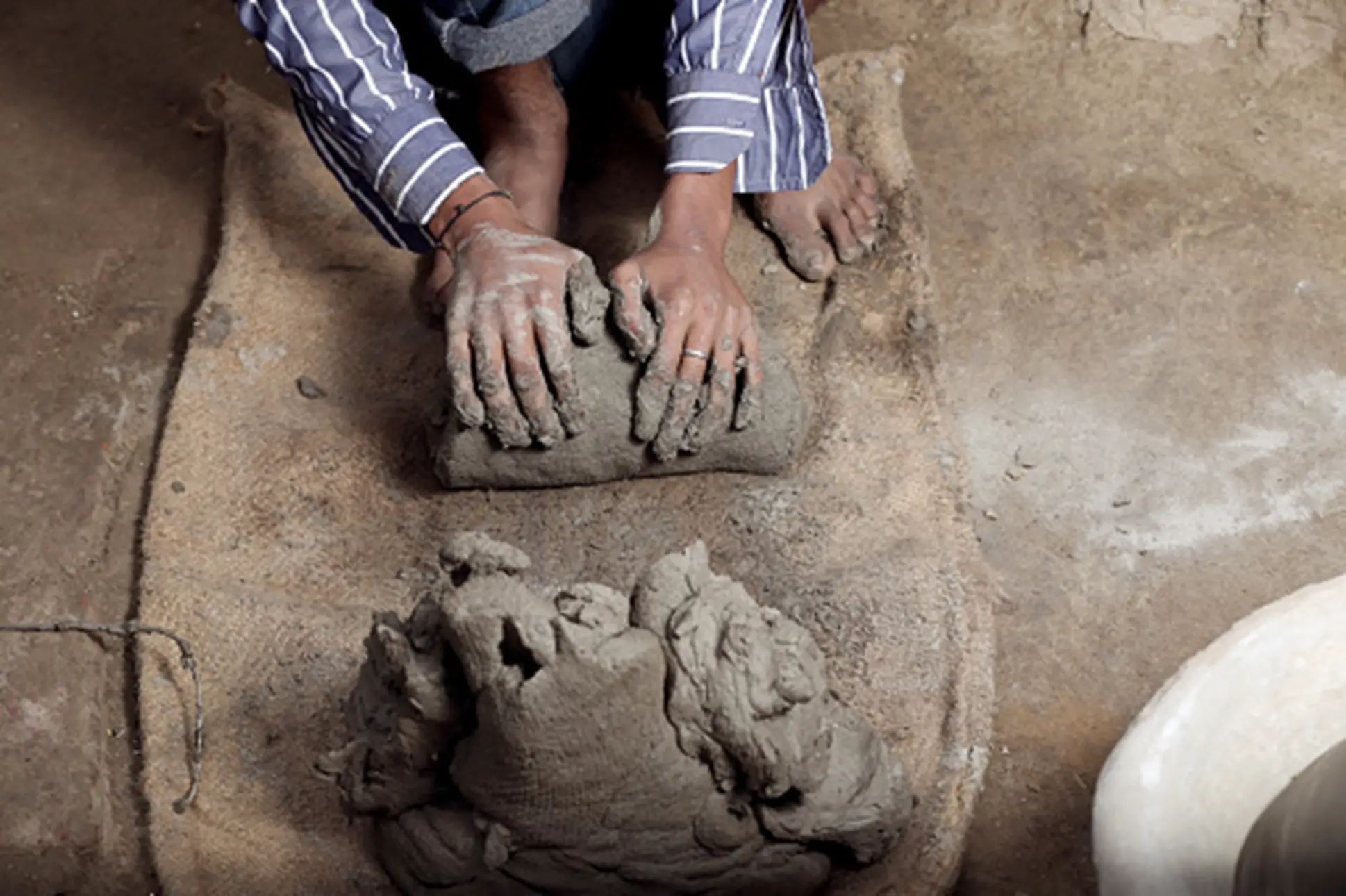Pottery is an important and olden art form whose beauty lies in the precise efforts that go into its making. However, while trying to achieve the perfect finish, a common challenge faced by artists is the development of air bubbles. These not only are irritating for the pottery but also threaten the structural integrity of the final work. This article will help you master clay preparation to say goodbye to air bubbles in pottery through careful mixing, using the right tools, kneading well, and hydrating your clay correctly.
How Do Air Bubbles Develop in Pottery?
Air bubbles developing in your pottery are a common phenomenon. There are various reasons why this may be happening to you. Let us learn two of the most common reasons why air bubbles may be developing in your pottery:
- Trapped Air During Wedging
Wedging is an essential step during clay preparation. It involves kneading and compressing the clay to remove air pockets. However, if you do not do it carefully, tiny air bubbles can become trapped. It will later cause issues during the pottery process.
- Air Pockets from Clay Mixing
Incomplete mixing of clay can lead to the creation of various air pockets. When these pockets go unresolved or are not removed, they become bubbles during pottery firing. It can compromise the structural integrity of the pottery.
The Problem with Air Bubbles in Pottery
Air bubbles may seem harmless, but they can significantly challenge your pottery-making process. They can cause deformities, weak points, and cracks in your finished wares. So, identify any potential air bubbles before the pottery solidifies to create a durable and beautiful piece.
Is There Any Way to Remove Air Bubbles in the Pottery?
Use various techniques and tools during the clay preparation stage to achieve bubble-free and robust pottery. Let us delve into this further:
1. Use of Certain Tools
Specific tools can help you create a more durable and structured piece in the long run. These are the wire cutter and the clay knife, which we shall discuss in detail now:
a. Wire Cutter
A wire cutter is effortless yet effective in removing bad clay portions and cutting through air pockets. It allows potters to trim and shape their clay with precision without damaging the other parts of the piece. Reducing the chances of air bubbles manifesting in the final product is essential.
b. Clay Knife
A clay knife is another vital tool for every potter. Its sharp edge is perfect for slicing through the clay. You can thus ensure a clean cut that reduces the chances of trapped air. Cognizant use of a clay knife can seriously enhance the overall quality of the pottery. Try the BCP Clay Fettling Knife, which offers excellent ergonomic comfort while strengthening your pottery wares.
2. Special Clay Kneading Techniques
Apart from using all the right tools, as a potter, you must be mindful about employing the correct clay kneading techniques to eliminate or prevent air bubbles from forming. Here is how you can do it:
a. Spiral Kneading
Spiral kneading is a method that uses the rotating and folding of the clay in a spiral motion. This technique helps in evenly distributing moisture and expels the trapped air. Potters often use spiral kneading as a proper measure for eliminating air bubbles.
b. Ramshead Kneading
Ramshead kneading is called so due to its resemblance to a ram’s head. You do this by pressing the clay downward with both hands. This technique eliminates oversized air pockets and creates consistency throughout the clay.
How Do You Prevent Air Bubbles from Forming While Creating Pottery?
Prevention is also crucial to mastering clay preparation and achieving unique pottery wares. Here are the top two preventive measures you can take:
1. Slow Clay Wedging
Do not rush into the wedging process since it increases the likelihood of trapping air. Take time to wedge the clay slowly and remove the air appropriately. It will eventually minimize the risk of bubbles forming during the former stages.
2. Proper Clay Hydration
Furthermore, you must make sure that the clay has adequate moisture. Clay that is too dry or too wet can lead to air bubbles getting trapped in it. Potters must find the proper balance and hydrate the clay evenly for a smooth consistency.
Conclusion
Mastering clay preparation is a base-level skill every potter should aspire to deliver high-quality wares. Once mastered, this type of clay preparation will leave no room for air bubbles. Make sure to use the right tools and techniques, as mentioned above, and you are good to go!







